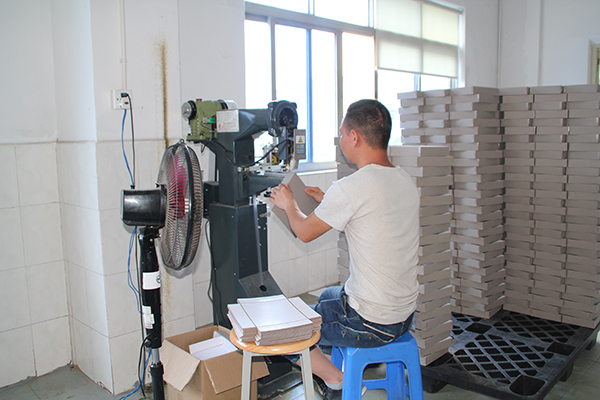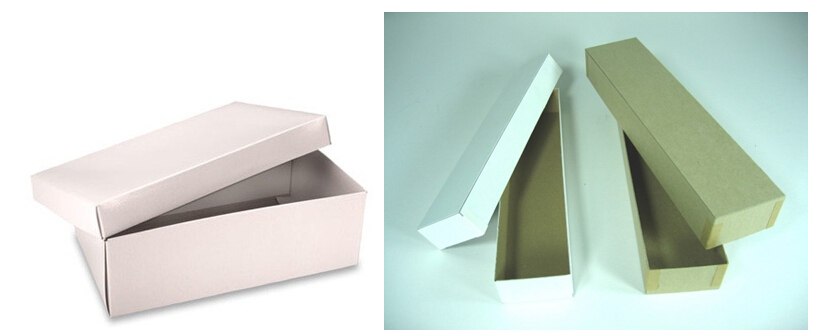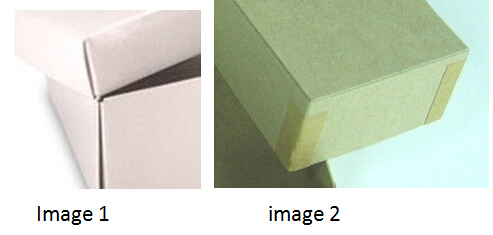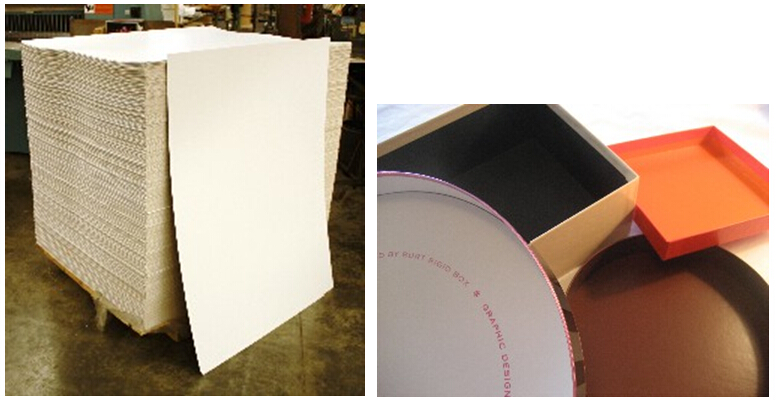
Two Radically Different Approaches to Packaging
Before we investigate the actual manufacturing process, let's consider the differences between a folding carton and a set-up box. At first glance, it may be difficult to tell them apart. The base and lid on the left look pretty much the same as the boxes on the right.

Take a closer look, however, and you'll see that the panels on the box on the left have been folded over to make up the box. The lid on the right is made from a single piece of chipboard, cut-scored to fold, with the sides held together by tape.
The sample on the left is a folding carton; the one on the right is a set-up box.

A set-up box can be distinguished from a folding carton in three major ways:
Once manufactured, a set-up box will not collapse like a folding carton, hence its other interchangeable name rigid box.
The chipboard substrate used for the walls of a set-up box is as much as four times thicker than the paperboard used to make a folding carton.
Unlike folding cartons, printing is rarely applied to the chipboard, but rather to a separate "wrap" of paper which is then adhered to the plain box.
A wide variety of wraps may be applied to a set-up box, including padding, leather, fabric and flocked (a decorative finish accomplished by applying fine fiber particles to the
Adhesive coated surface of the paper; see Image 3 for examples).

Set-up boxes have been in use since the late 1800's. Today, there are many variations of possible styles, some of which may be seen on the following pages. For our purposes, we will describe the manufacture of the most basic style, the wrapped set-up base and lid.
Non-bending chipboard, the material most often used for rigid boxes, may range from .040 (40 thousandths of an inch) to .080 or more. Compare this to folding cartons, whose stock may vary from .010 to .036. Note that there are many types of substrate used by folding cartons depending upon the end use of the packaging, but most set-up boxes use chipboard. This is because in set-up box manufacturing, the finishing is done to the wrap, not the substrate.
The exception is when a material called white vat-lined chip is used. In this case, the chipboard is lined on either one or both sides with a white coating made from newsprint, giving the box a more finished appearance. This stock works especially well if the interior of the box is to remain unfinished, or unlined. By contrast, Image 5 shows some samples of lined boxes.

Image 4: a pallet of double white vat-lined image 5: Rigid Box
chip courtesy of Burt Rigid Box
The goal in set-up box manufacturing is to bring the wrap and the formed chipboard lid or base together, adhering them in perfect alignment before forming the finished tray. Of the six fundamental steps in the production of a set-up box, two make the box, two produce the wrap, and two bring them together to produce the tray: for the tray scoring and staying; for the wrap printing/preparation and applying adhesive; and finally, for the completed tray - spotting and wrapping.
Comment